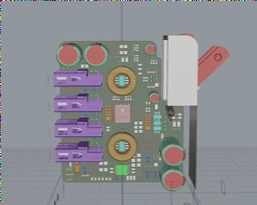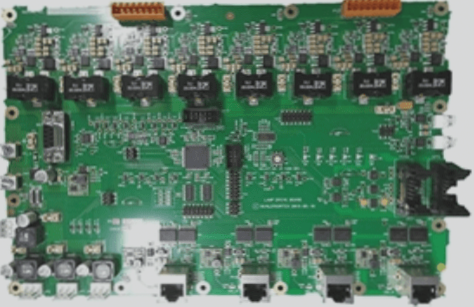PCB wiring is critical in high-speed circuits, yet it is often one of the final steps in the design process. There are numerous challenges involved in high-speed PCB wiring, and a great deal of literature has been published on the subject. This article focuses on the wiring of high-speed circuits from a practical standpoint. The goal is to help new users recognize the various considerations that must be addressed when designing high-speed circuit PCB layouts. It also serves as a review for customers who may not have worked with PCB wiring recently. Due to space constraints, this article does not cover every issue in detail, but it will focus on the key factors that most significantly impact circuit performance, design efficiency, and the reduction of time spent on revisions.
Although the focus is on circuits involving high-speed operational amplifiers, the principles and techniques discussed here are generally applicable to the wiring of most high-speed analog circuits. When operational amplifiers are operating at very high radio frequencies (RF), the performance of the circuit is heavily dependent on the PCB layout. Even the best-designed circuit, when laid out poorly, may fail to deliver optimal performance. Proper planning and attention to critical details throughout the layout process are essential to achieving the desired circuit behavior.
**Schematic Diagram**
While a good schematic cannot guarantee successful wiring, quality wiring begins with a well-thought-out schematic. Take the time to consider the signal flow throughout the circuit when drafting the schematic. If the signal flows logically from left to right in the schematic, the same should be true for the signal flow on the PCB. Provide as much relevant information as possible in the schematic. This is particularly important when the circuit designer is not available and we are asked to assist in troubleshooting or solving circuit issues. The more information we have, the more effectively we can assist, which is highly appreciated by everyone involved, including us.
Beyond standard reference identifiers, power requirements, and tolerance information, what else should be included in the schematic? Here are some suggestions for elevating an ordinary schematic to a top-tier one: include waveform details, mechanical specifications for the casing, the lengths of the printed traces, clearances, which components should be placed on the PCB, adjustment details, component value ranges, heat dissipation data, controlled impedance traces, annotations, and brief descriptions of circuit functions, among others.
**Trust, but Verify**

1. If you’re not personally designing the PCB layout, be sure to allocate ample time to thoroughly review the wiring design by the person responsible for it. At this stage, a small preventative measure is worth more than a large-scale fix later. Don’t assume the designer will fully understand your vision. Your input and guidance are crucial during the early stages of the design process. The more information you provide and the more you involve yourself in the wiring process, the better the final PCB design will be. Set a tentative completion timeline for the wiring engineer and conduct quick checks based on the progress reports you receive. This “closed-loop” approach helps keep the wiring on track and minimizes the chances of costly rework.
2. The instructions you provide to the wiring engineer should include: a brief description of the circuit’s function, a schematic diagram showing the input and output locations, details about the PCB stack-up (such as board thickness, number of layers, and specifics of each signal and ground plane—such as power consumption, ground, analog, digital, and RF signals); which signals should be assigned to each layer; the placement requirements for key components; the exact location of bypass components; which signal traces are critical; which lines require controlled impedance; which lines need to match length; the component sizes; which traces should be kept apart (or close together); which components should be spaced (or placed) apart or near each other; which components should be placed on the top layer versus the bottom layer of the PCB. Never complain about giving too much information—it’s always better to provide more than less.
3. A lesson learned: About 10 years ago, I designed a multilayer surface-mount PCB with components on both sides of the board. The PCB was fixed inside a gold-plated aluminum enclosure using numerous screws, due to strict anti-vibration requirements. Bias feedthrough pins passed through the board and were soldered to the PCB. This was a complex design, and some components were used for test settings (SAT). However, I had clearly defined their locations. Can you guess where these test components were placed? That’s right, underneath the board. Product engineers and technicians were not pleased when they had to disassemble and reassemble the entire device after performing the necessary adjustments. I learned from that mistake and haven’t made it again.
4. **Location**
Just as in PCB design, location is everything. Deciding where to place each circuit, where to position individual components, and how to manage the surrounding circuits is critical. Typically, the locations of inputs, outputs, and power supply pins are predetermined, but the routing of circuits between them requires thoughtful consideration. This is why paying attention to wiring details can yield significant benefits. Start by positioning key components and thinking about the entire circuit and PCB layout. Defining the positions of important components and signal paths from the outset ensures the design will meet the desired functionality. Achieving the correct design on the first attempt can reduce costs, alleviate pressure, and shorten the overall development cycle.
5. **Bypassing Power**
Properly bypassing the power supply to reduce noise is a crucial aspect of PCB design, especially for high-speed operational amplifiers and other fast circuits. There are two common methods for bypassing power in high-speed op-amp circuits.
**Grounding the Power Supply Pin**: This is the most effective method in most cases, where multiple parallel capacitors are used to ground the operational amplifier’s power supply pin directly. Typically, two parallel capacitors are sufficient, but adding more can benefit certain circuits.
**Using Capacitors with Different Capacitance Values**: By connecting capacitors with varying capacitance values in parallel, you ensure that low alternating current (AC) impedance is seen at the power supply pin across a wide frequency range. This is especially important at the frequency range where the op-amp’s power supply rejection ratio (PSR) starts to attenuate. These capacitors help compensate for a reduced PSR in the amplifier. Maintaining a low-impedance ground path over many octaves ensures that unwanted noise is effectively filtered out from the op-amp.
Figure 1 illustrates the benefits of using multiple capacitors in parallel. At lower frequencies, larger capacitors provide a low-impedance path. However, once the frequency exceeds the capacitor’s resonant frequency, its impedance increases and becomes inductive. This is why using multiple capacitors is essential—when one capacitor’s frequency response begins to drop off, the others remain active, helping to maintain low AC impedance over a wide frequency range.
If you have any PCB manufacturing needs, please do not hesitate to contact me.Contact me




